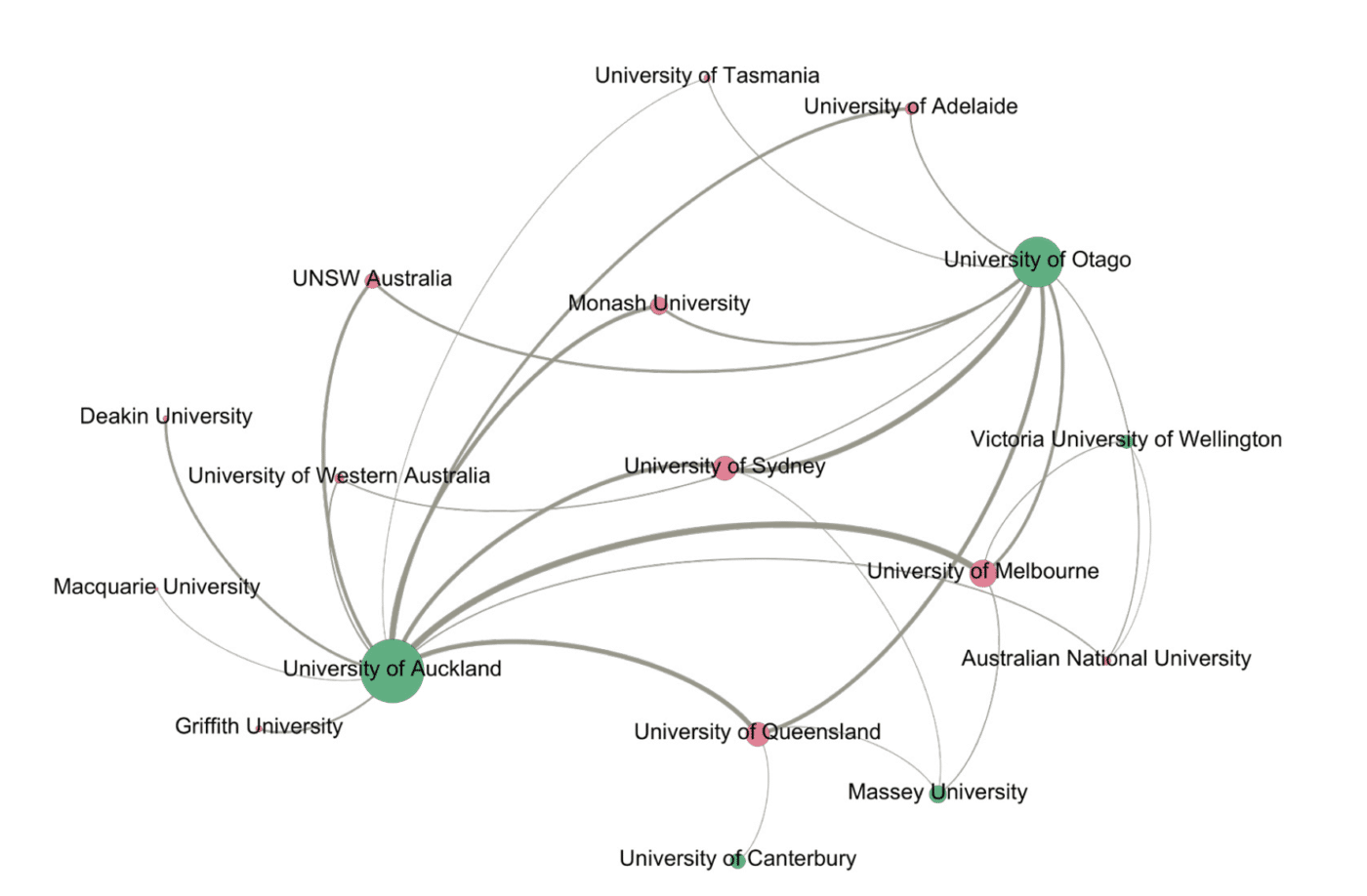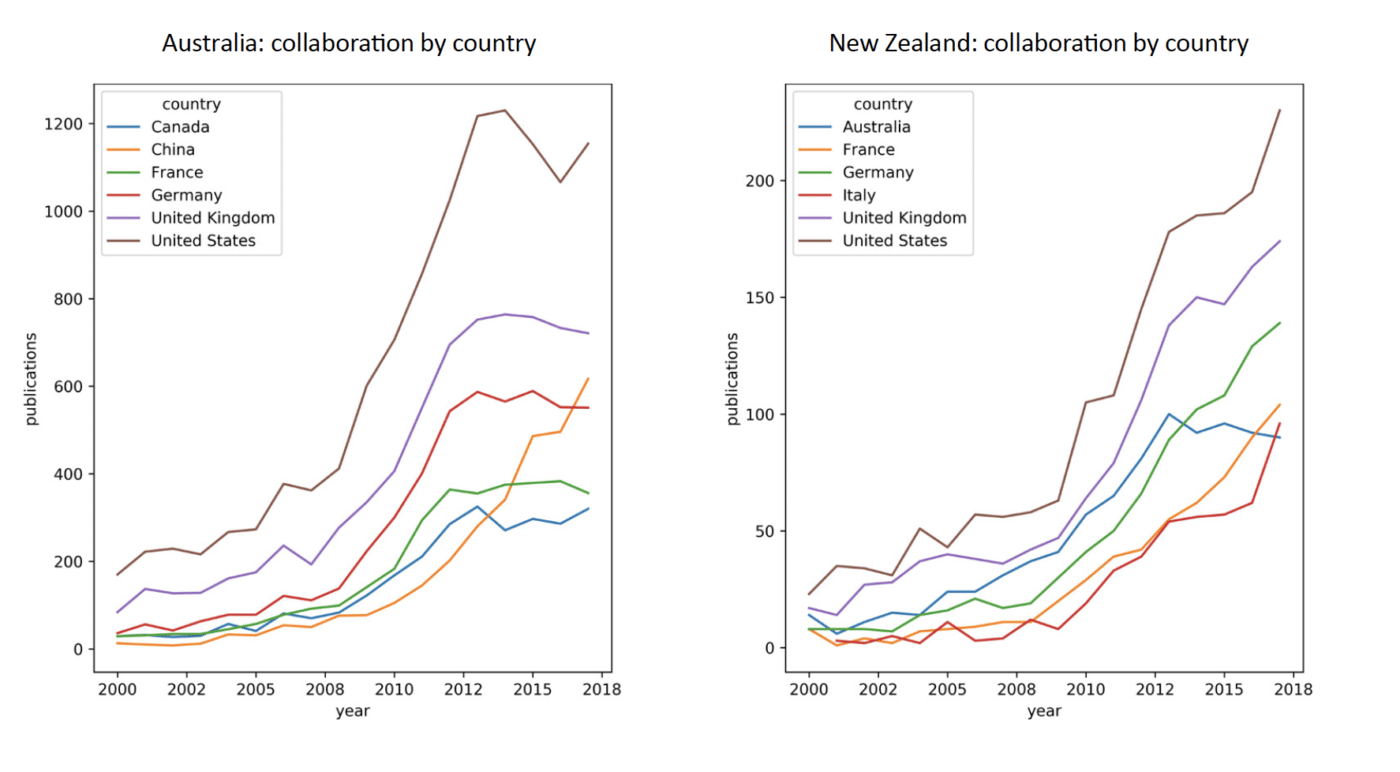Subscribe to our newsletter
The Fourth Age of Research in Australasia
An analysis of international collaboration patterns in Australia and New Zealand
Since 2013, the movement towards Internationally collaborative research has spread dramatically beyond elite science. Analysing these trends helps provide insight into the level of influence that different research economies are able to exercise over each other. In this short piece, we perform a high-level analysis of the influences that are emerging in the Australasian region.
More than other regions in the world, Australasia has always been outward looking and its research community has sought to connect itself with international partners. This is, no doubt, in part due to the geographical location of the continent but other factors play a role including the heavy development of Australasia’s research base in the last few years and the importance and power of that research base as an economic driver for the region. More recently, a coherent focus has been taken across the region to international engagement.
We have used Digital Science’s Dimensions database together with a filter of high-quality journals provided by the Nature Index4 journal list to explore the national and international collaboration landscape in Australia and New Zealand.
Collaboration on an International Scale

Figure 1: Journal article production for Australia (left) and New Zealand (right) between 2000 and 2018. The blue line shows internationally collaborative papers and the orange line shows papers that include only domestic authors. Both graphs include all Dimensions journal articles. Australian international research exceeds domestic research in 2015; New Zealand international research exceeds domestic research in 2012.

Figure 2: Journal article production for Australia (left) and New Zealand (right) between 2000 and 2018. The blue line shows internationally collaborative papers and the orange line shows papers that include only domestic authors. Both graphs include only the Nature Journal List filter of Dimensions journal articles. Australian international research exceeds domestic research around 2004; New Zealand international research exceeds domestic research in 2001.
Collaboration Between Australia and New Zealand
The relationship between Australia and New Zealand has always been close. However, this is not necessarily reflected as an equal partnership in cross-board research. A quick analysis, shown in Fig.4, of collaborations between institutions within Australasia reveals that, as a proportion of research the Universities of Auckland and Otago are, by far, the biggest actors in these collaborations and their partnerships are dominated by Group of Eight institutions.
Within the Nature Index Journals however, the relationship between Australia and New Zealand is less pronounced. As figure 5 illustrates, Australian collaboration with other non-Chinese partners including New Zealand has plateaued. For New Zealand, collaboration with Europe and the United States continues to increase independently of Australia, and collaboration with China is not yet a significant feature.

Figure 4: Collaborations by institution within the Australasian region.

Figure 5: Countries by Journal article collaboration Australia (left) and New Zealand (right) between 2000 and 2018. Nature Index Journal List
Discussion
International collaboration is clearly on the rise and can be measured using publications databases. It is clear that academics publishing in high-impact journals are leading this revolution and that Australasian institutions have been amongst the early adopters and hence beneficiaries of this trend. Internationalism in research is generally seen as a positive thing since research problems are getting harder and require more resources to make progress. However, internationalism can also leave a research base open to the influence of other countries priorities and drivers. Some countries favour a blue-skies approach to research while others tend to prefer an applied approach. While some countries will naturally not collaborate due to these differences in the style of their research economies, resource scarcity often brings unlikely partners together. Diversity of research approaches and programmes is generally taken to be good for research. However, the dominance of China in the pacific region as a rising research power challenges this diversity in the same way that the US’s view of research has influenced other research systems around the world in the 20th Century. It will be critical to continue to analyse these trends in order to assert the most appropriate research strategy for the region.



